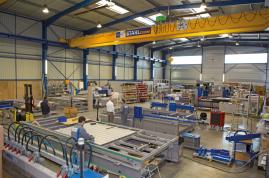Water jet cutting affects various industries across the board due to the wide variety of raw materials that can be cut: metal (steel, stainless steel, titanium, ...), composite, leather, textile, cardboard, wood, foam, plastic, stone, granite, marble, glass... and even food products such as fruits, vegetables, meat and pastries...! As a result, industrial problems can differ and the appropriate technical solutions need to be found.
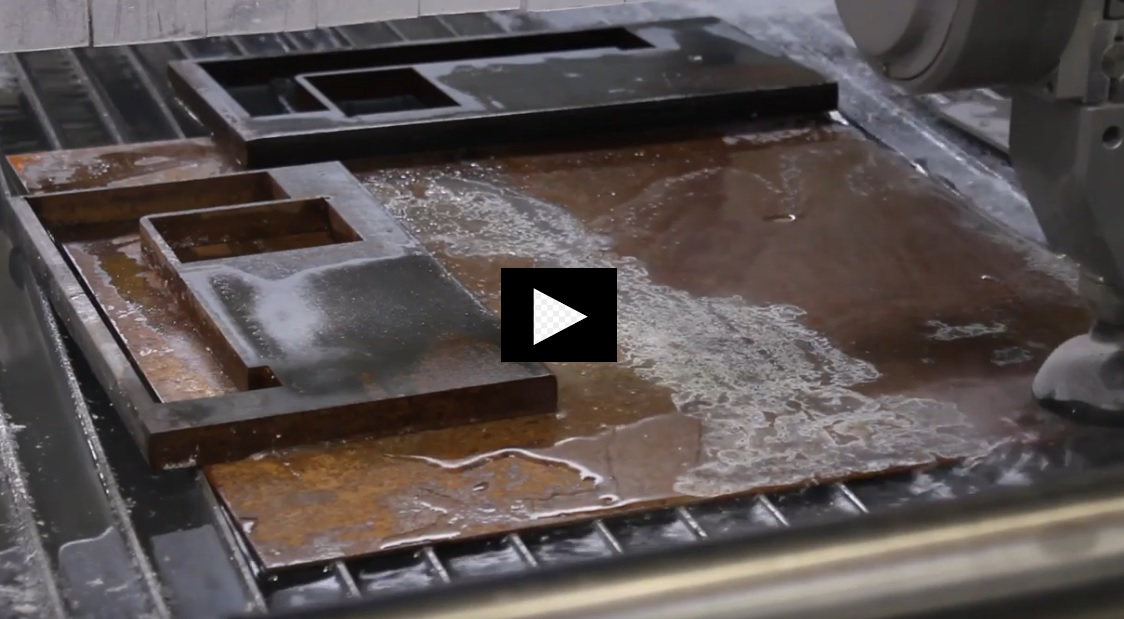
A water jet can cut through virtually any material with different benefits:
- food cutting using waterjet technology eliminates the risk of pollution or cross-contamination of the cut products.
- with soft materials, the thin jet (approximately 0.1 mm in diameter) allows for an effortless cut without deformations.
- attributes most often highlighted with hard materials include: cutting sensitive materials with no heat affected zone (such as with lasers or thermal cutting machines), which preserves the intrinsic properties of the material and produces intricate details (very sharp external angles). Finally, its cutting technology using an abrasive water jet, has made it possible to cut even very hard materials with rather intricate details since the jet is about 1.1 mm in diameter.
How to produce components with waterjet cutting while respecting the technical characteristics of the raw material, particularly with composites?How to provide additional added value to components cut with a waterjet cutting machine?
How to meet very specific needs with water jet cutting?
For the purpose of this article, Metal-Interface questioned Arthur PAIS, President of Mécanuméric, and Guillaume JULLIAN, in charge of waterjet products. They shared their experience and highlighted examples illustrating our comments.
- food cutting using waterjet technology eliminates the risk of pollution or cross-contamination of the cut products.
Integrating other technologies into a waterjet cutting machine
Enhancing a water jet cutting machine with other technologies may be necessary in certain situations, in view of pursuing different objectives:
- a specific purpose of the component which requires the prevention of potential deterioration of intrinsic properties,
- productivity improvement on the manufacturing cycle of components.
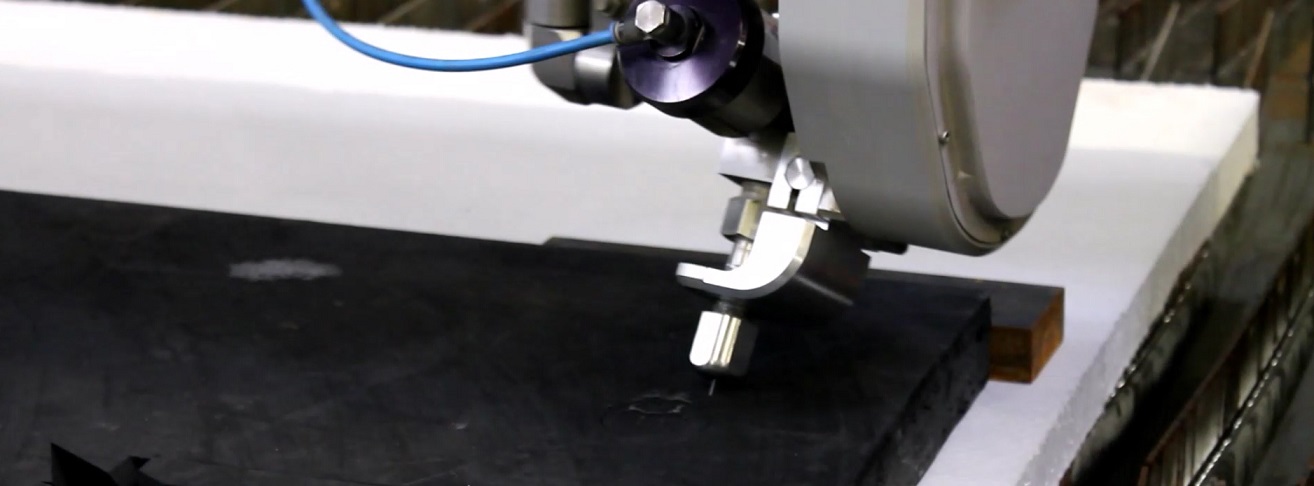
Arthur PAIS gives the example of parts produced for the AIRBUS A350: "the parts are cut of a thermoplastic carbon composite: there was a significant risk of delamination of the different layers of the material, even when using low pressure water jet cutting. In order to ensure a compliant component with preserved durability and resistance properties, a hole is made beforehand using a drilling spindle directly integrated into the machine. The water jet cut is then made tangentially not at full width. »As a result, integrating a drilling head and a water jet head into the same machine, the manufacturer reaps the benefits of different technologies on the same production line while meeting requirements related to the material used.
These technological extensions can also be an interesting solution for improving productivity, particularly by limiting transfers from one part of a production station to another.
Guillaume Jullian points out three examples to illustrate:- "a manufacturer who has a combo machine. It's actually a water jet based machine on which a milling spindle has been added as well as a tool magazine for the production of calibrated holes.
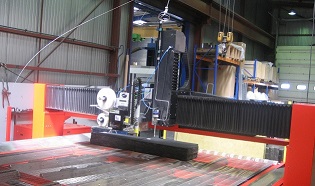
- Another manufacturer conducts the automatic labelling of components directly on the water jet machine (traceability, scrap optimization and material consumption by mixing several simultaneous controls and the retrieval of parts for assembly on site). These are all additional operations that add value to the components produced.
- Finally, in another example, a robot integrated waterjet cutting machine performs some of the cutting operations by moving the pieces to be cut under the water jet heads, and then ensures operations involving parts and tools in a fully automatic manner. »
Machine vendor support is essential for these multi-technology water jet machine applications as the solutions need to be tailor-made for the customer. That's why the vendor must be the machine manufacturer and have a multi-technology design office along with a team of technicians providing technical support with solid expertise of waterjet technologies and complementary technologies.
- a specific purpose of the component which requires the prevention of potential deterioration of intrinsic properties,
100% custom-made waterjet cutting machines
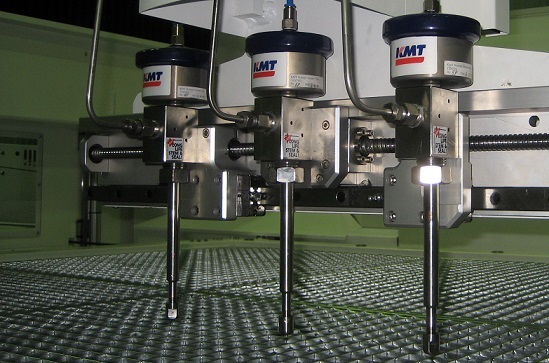 The design and manufacture of waterjet cutting machines can go far beyond simple customization or the addition of another technological layer. When making a custom-made machine, the aim is to offer a tailor-made solution to the problem of a manufacturer, when standard waterjet cutting solutions prevent it from being done optimally.
The design and manufacture of waterjet cutting machines can go far beyond simple customization or the addition of another technological layer. When making a custom-made machine, the aim is to offer a tailor-made solution to the problem of a manufacturer, when standard waterjet cutting solutions prevent it from being done optimally.
Arthur PAIS and Guillaume JULLIAN give the example of a water jet cutting machine project meeting the specifics needs of a food industrialist:- "In 2018, we designed and produced a water jet machine with 20 cutting heads providing high productivity for cutting fruit for the food industry. The equipment was entirely custom-made combining a solid industrial appliance for the food industry, designed to fully meet the needs of the industrialist and the relevant industrial application. »
- "Another example, this time for a manufacturer in the chemistry / pharmaceutical industry, the company designed a machine capable of producing the raw product (through water evaporation using fibreboard pulp), cutting it out using waterjet cutting as needed (various in size) on the go and on a continuous line, ejecting scrap and reprocessing it for it to become raw material once again and return to the beginning of the cycle. As a result, the machine produces zero waste, 100% of the raw material is used. In order to do this the company studied possible solutions, made functional models to test each function of the machine and then combined all the solutions to design and manufacture the final machine and achieve the final development phase. »
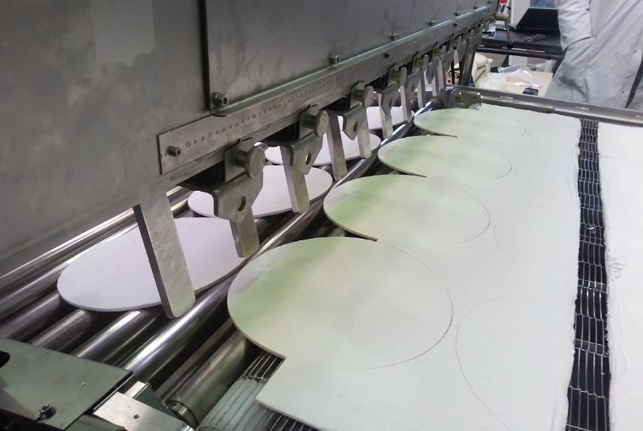 In conclusion, combining several technologies on a waterjet cutting machine can be an interesting approach to improve the productivity of the production station and / or meet technical constraints related to the material or physiognomy of the components to produce. The design and manufacture of a custom-made water jet machine is opportune in more specific cases, making it possible to pragmatically solve certain industrial problems.
In conclusion, combining several technologies on a waterjet cutting machine can be an interesting approach to improve the productivity of the production station and / or meet technical constraints related to the material or physiognomy of the components to produce. The design and manufacture of a custom-made water jet machine is opportune in more specific cases, making it possible to pragmatically solve certain industrial problems.
In such cases, the choice of designer and machine manufacturer is very important. The person must be able to ensure the entire design through to manufacturing, spreading the costs in a reasonable manner, while also being able to ensure the long-term maintenance of the machine.
Check out MECANUMERIC's waterjet cutting machine catalog
Copyright - Reproduction prohibited without the written permission of Metal-Interface- "In 2018, we designed and produced a water jet machine with 20 cutting heads providing high productivity for cutting fruit for the food industry. The equipment was entirely custom-made combining a solid industrial appliance for the food industry, designed to fully meet the needs of the industrialist and the relevant industrial application. »
Metal-Interface takes great care to protect your privacy: when you submit a request or ask a question, your personal information is passed on to the supplier concerned or, if necessary, to one of its regional managers or distributors, who will be able to provide you with a direct response. Consult our Privacy Policy to find out more about how and why we process your data, and your rights in relation to this information. By continuing to browse our site, you accept our terms and conditions of use.
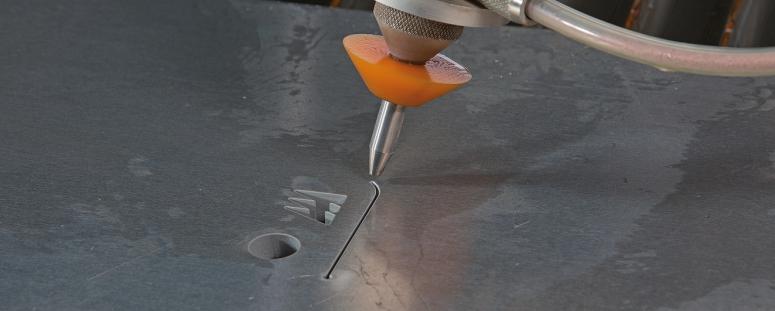 Water jet cutting Technical article
Water jet cutting Technical articleWater jet cutting: how to meet more sophisticated needs?

